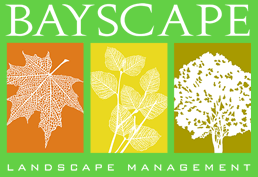Winter is a difficult time for a tree. Trees may look inactive going into winter but the fact is they continue to regulate their metabolism and only slow down some physiological activities. Trees still continue to slowly grow roots, respire, and take in water and nutrients during the dormant stage.
A dormant tree still needs to be winterized to remain healthy!
How to Winterize a Tree
1. Pruning
Always prune the dead, diseased, or overlapping branches in late fall. This will not only strengthen the tree, encourage strong growth in the spring, but also minimize winter storm damage. Prune branches that can touch the ground when loaded with rain and snow (foliage in contact with soil invites undesirable pests and can break with heavy snow loads). Also, make sure you branches have a 10 ft. clearance from chimneys.
2. Mulch and Aerate
Mulching for dormant trees? Yes! Young trees are especially vulnerable to fluctuations of temperature and moisture and need mulching protection. Mulch is good insurance that both conditions will be evenly managed during winter.
Always aerate soils and compacted mulch if the roots are water logged or poorly drained. Saturated and dense soil can suffocate roots. Roots function as an anchor, providing major resistance to wind. With strong winds and saturated soil, trees may be vulnerable to falling or cracking due to a loss of anchorage. Any “heaving” of soil around the base of a tree should be taken seriously.
3. Reduce Sail Effect
Reducing “sail effect” is the practice of removing minimal foliage mass so there is less branch resistance to wind. We sometimes call this crown thinning. This allows wind to move more freely through the crown of a tree, thus reducing the wind loading upon the limbs. Crown thinning produces a balanced crown structure, without altering the overall size or shape of the tree.
4. Recognize and Reduce Points of Hazard
Recognizing and reducing points of tree hazards not only increases the safety of your property, but also improves the tree’s health and may increase its longevity!
Dead trees are considered the most hazardous. Once a tree dies, decay organisms begin weakening tree structure. Structural weakening increases over time. A dead tree is a hazard when it threatens personal injury or would cause damage to personal property or structures if it failed.
Leaning trees are a threat when the lean is the result of structural damage. Trees that lean naturally usually are reinforced by compensatory growth. The greater the lean of damaged trees, the greater the probability of failure during wind gusts or snow loads.
A tree with a potential to fall into a utility line, or close to one, is a very serious situation. Not only can they injure people or property near the line, but also hitting the line may cause power outages, surges, fires, and other damage. If an electrical wire comes in contact with a tree, assume it is energized and dangerous. Do not touch the tree or anything in contact with it and call your power company immediately.
An arborist familiar with hazard tree evaluation may suggest the following:
- Remove the target. Move cars, landscape furniture, or other possible targets to prevent them from being hit by a fallen tree.
- Cable and brace the tree. Provide physical support for weak branches to increase their strength and stability.
- Remove the tree. Some hazardous trees are best removed.
Phew! There are a lot of options and things to consider when winterizing your trees. We hope this checklist will save you some time, money, and avoid loss or injury. If you need assistance, please contact us. We are on stand by and ready to help!
